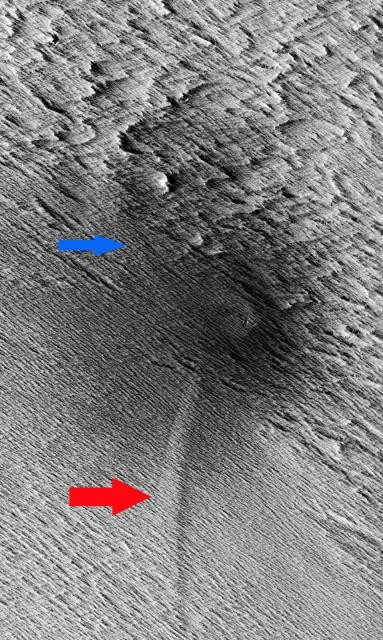Streaks of Dust on Mars ‘Result of Meteorite Shockwaves’

Shockwaves generated by a meteorite careening towards the surface of Mars can trigger avalanches of dust even before the rock from the outer space hits the planet's surface, a new study has shown.
According to research conducted by the University of Arizona, the streaks of light or dark smoke seen around many impact craters on the Martian surface are the result of the shockwaves that precede the actual impact of meteorites.
Kaylan Burleigh, who led the study, said: "We expected that some of the streaks of dust that we see on slopes are caused by seismic shaking during impact."
As the Martian atmosphere is 10 times thinner than that of the Earth, even small blocks of rock crash into the surface relatively unimpeded, without burning up or breaking up, the study has noted.
The team of experts analysed five large craters, all of which were formed in one impact event close to Mars' equator. They arrived at the conclusion that the thousands of downhill-trending dark streaks on the flanks of ridges covering the area are dust avalanches triggered by the impact. "We were surprised to find that it rather looks like shockwaves in the air trigger the avalanches even before the impact," Burleigh said.
Such dark or light streaks on the Martian surface were previously thought to be landslides, but none of the studies had linked them to the impact of meteorites. The largest among the craters in the cluster measured 22 metres (72 feet across) which is approximately the size of a basketball court.
Experts now believe that such large craters formed as the result of meteorites breaking up in the atmosphere and hitting the ground in fragments.
Dark, narrow streaks measuring up to 50 metres too were located near the impact site. "The dark streaks represent the material exposed by the avalanches, as induced by the airblast from the impact," Burleigh said.
A pair of unique surface features which are extending from the central impact crater, termed as scimitars, led the team to the conclusion that the impact triggered the avalanches. Burleigh added: "Those scimitars tipped us off that something other than seismic shaking must be causing the dust avalanches."
The shockwaves are generated as a result of the meteors screaming through the atmosphere. The team reconstructed the phenomenon with computer models to assess the impact of shockwaves on the Martian soil. They found the exact pattern of scimitars which were spotted on the areas of impact on the Martian surface.
Burleigh said, "We think the interference among different pressure waves lifts up the dust and sets avalanches in motion. These interference regions, and the avalanches, occur in a reproducible pattern."
"We checked other impact sites and realised that when we see avalanches, we usually see two scimitars, not just one, and they both tend to be at a certain angle to each other. This pattern would be difficult to explain by seismic shaking," he added.
© Copyright IBTimes 2025. All rights reserved.





















